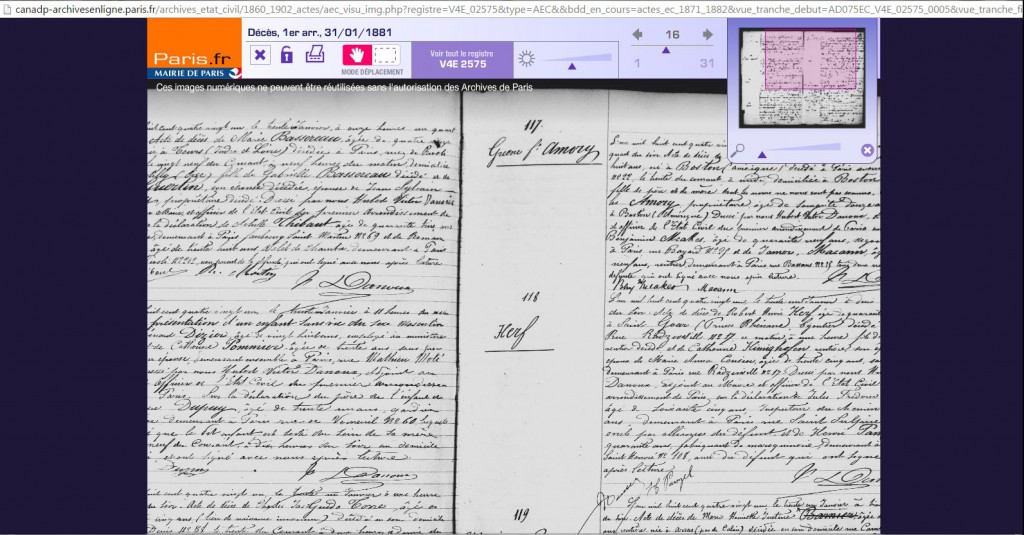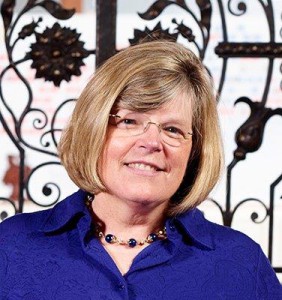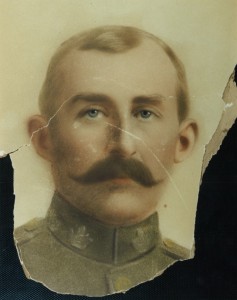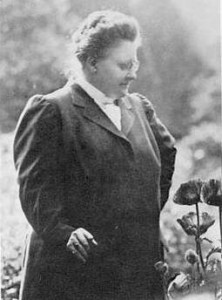 The name Martha Babcock Greene Amory might not immediately resonate, but the lives of her immediate forebears are well-known to us today. She was born in Boston 15 November 1812, the daughter of Gardiner Greene and his third wife, Elizabeth Clarke Copley. Mrs. Greene was the daughter of John Singleton Copley, the well-known American painter, and his wife Susannah Farnum Clarke; she was the granddaughter of Richard Clarke, whose consignment of tea was thrown into the harbor during the Boston Tea Party. That’s a lot of history for just a couple of generations! Continue reading The lady vanishes
The name Martha Babcock Greene Amory might not immediately resonate, but the lives of her immediate forebears are well-known to us today. She was born in Boston 15 November 1812, the daughter of Gardiner Greene and his third wife, Elizabeth Clarke Copley. Mrs. Greene was the daughter of John Singleton Copley, the well-known American painter, and his wife Susannah Farnum Clarke; she was the granddaughter of Richard Clarke, whose consignment of tea was thrown into the harbor during the Boston Tea Party. That’s a lot of history for just a couple of generations! Continue reading The lady vanishes
Category Archives: Family Stories
Keeping time

The name Benjamin Bagnall holds a place of distinction in the annals of Boston’s early history. Bagnall is often recorded as one of the city’s earliest clockmakers, and credited—as Morrison Heckscher notes—with constructing “a town clock for the New Brick Meeting-House” in Boston c. 1717.[1] While the building upon which Bagnall constructed his town clock no longer stands, a few other examples of Bagnall’s work survive to this day. The works of a tall case clock, in the possession of the New England Historic Genealogical Society (Fig. 1), is one of the Bagnall commissions that does survive.[2]
According to NEHGS records, Benjamin Bagnall constructed the works of the clock about 1725. Bagnall, who was born in England c. 1689, acquired the skills associated with the clock-making trade in his native country before arriving in Boston c. 1713. After his arrival in Boston, Bagnall married Elizabeth Shove of Charlestown, Massachusetts. By this marriage, Bagnall had seven children, including Samuel and Benjamin Bagnall. Continue reading Keeping time
ICYMI: Planning an ancestral trip
[Editor’s note: This post originally appeared in Vita Brevis on 7 October 2014.]
 Last week, I was happily recalling my 2012 trip to Finland, specifically a visit to my ancestral village, Teuva. I had the great good luck to meet cousins there and see the land that my ancestors farmed – and even the foundation of the tiny house where my grandmother grew up.
Last week, I was happily recalling my 2012 trip to Finland, specifically a visit to my ancestral village, Teuva. I had the great good luck to meet cousins there and see the land that my ancestors farmed – and even the foundation of the tiny house where my grandmother grew up.
When first planning that trip, I had no idea how to proceed. I could look at a map and find Teuva – and the nearest train station with a rental car facility – but I had no idea how to go about identifying living relatives. Continue reading ICYMI: Planning an ancestral trip
“Over there”

Next week I will be attending the Who Do You Think You Are? Live conference in Birmingham, England, where it is expected that more than 12,000 participants will be in attendance. The mustering of such a large body of genealogists and historians was only matched last year, in the United States, when the Federation of Genealogical Societies and RootsTech shared venues.
My ancestors are strong in New England on my mother’s maternal side, and I am very Canadian with mixed origins on my father’s side. However it is through my mother’s father John Samuel Lea (1901–1965) that I am most recently British. I was last in England nearly thirty years ago, as I was approaching my senior year in high school. At that point, veterans of the First World War were still alive in America, Canada, and throughout Europe. Continue reading “Over there”
Irregular border marriages in Scotland

Not long ago, I was searching for a record of an 1830s marriage between two prominent Scottish families. I was certain I would have an easy time locating this particular record, having identified the parish and county in which the couple were married, so I began my search. Yet while I searched several sources, including Given Name Index to Marriages in Old Parochial Registers to 1855,[1] and Scotland Marriages, 1561-1910, I found no record of the marriage. I attempted the search again using every variation of the surname I could think of, but struck out. I then turned to published genealogies regarding the two families, but found no mention of this particular couple’s marriage. Continue reading Irregular border marriages in Scotland
Making the skeletons dance

In his 1930 novel Immaturity, George Bernard Shaw wrote, “If you cannot get rid of the family skeleton, you may as well make it dance.” Shaw had a point with that statement. While we can deny them, hide them, or ignore them, we can’t remove the family skeletons from their places in our family trees. Once they’re “out of the closet,” those dry bones will walk around; what we make of them is up to us.
Scott C. Steward’s recent reposting of his article Genealogical Complexities brought to my mind the dilemma of all family history: how much do we really want to know, and what responsibility do we have in dispensing that information? Continue reading Making the skeletons dance
A growing family

We pick up the Bouchers in 1912 with Mrs. Frances Boucher[1] and her sons Carlos H., clerk, and Emile G., “2d vice pres. Crook-Horner Supply Co.,” at 1718 Linden Avenue in Baltimore, along with Mrs. Boucher’s grandson Harry P. Stone, clerk.[2] Thomas J. Wentworth, now a member of the Melbourne Advertising Agency with an office at 210 East Lexington Street, is back at 1731 Linden Avenue.[3] Edward H. Glidden appears as a member of Glidden & Friz, architects (in the Glenn Building, 16 St. Paul Street), and the treasurer of the Maryland Apartment House Company; he has already moved into the Glidden & Friz-designed Homewood Apartments on North Charles Street.[4] As in 1910, Claude Burch is at 804 North Calvert Street.[5]
In 1913, Edgar L. Brooks (who married Josephine Boucher Stone in that year) is listed as secretary of the Baltimore Chemical Company at Seventh Street, east corner of Gough; Julien P. Friez, instrument maker and the father of Lucien Louis Friez, was living at 1230 East Baltimore Street.[6] Edward H. Glidden and Clyde N. Friz now had their office on the twelfth floor of the Maryland Casualty Building.[7] Continue reading A growing family
Not just Rip Van Winkle

As anyone engaged in the study of family history knows, researching the women of the past can be a difficult process. Many commonly used sources draw out details in the lives of men but provide only minimal statistical information about the lives of women. Women are often erased from the narratives written by historians and their documents lost or destroyed. This state of affairs is changing, however, and improving, thanks in part to the entrance into the historical field of women eager to tell their own stories. This substantial increase in historical work by women began in part with the field of genealogy, which opened to women much more quickly than other areas of study. Continue reading Not just Rip Van Winkle
ICYMI: Genealogical complexities
[Author’s note: This post originally appeared in Vita Brevis on 3 September 2014.]
 When I started out as a genealogical writer, I followed the model of genealogies published earlier in the twentieth century. The genealogical world they depicted was an orderly one, with generation after generation born in one place, married in another, and buried in a third. The greatest dramas I faced in writing my first book (The Sarsaparilla Kings, published in 1993) concerned cousins who deplored the information I had uncovered on their brief first or second marriages, information they were reluctant to see in print. Continue reading ICYMI: Genealogical complexities
When I started out as a genealogical writer, I followed the model of genealogies published earlier in the twentieth century. The genealogical world they depicted was an orderly one, with generation after generation born in one place, married in another, and buried in a third. The greatest dramas I faced in writing my first book (The Sarsaparilla Kings, published in 1993) concerned cousins who deplored the information I had uncovered on their brief first or second marriages, information they were reluctant to see in print. Continue reading ICYMI: Genealogical complexities
A new century

My review of almost sixty years’ worth of Baltimore city directories has yielded much information on my great-great-great-grandfather E. W. Boucher; my great-great-grandfather William Boucher Jr. (1822–1899) and his two wives; and many of William Jr.’s children and -in-laws. In the 1904 city directory, we find Mrs. Frances Boucher[1] at 1718 Linden Avenue with her sons Louis A. and Carlos H. Boucher, clerks. Thomas J. Wentworth, “Proprietor of Saturday Review” and husband of the younger Frances Boucher, is nearby at 1731 Linden Avenue; his temporary office in the year of the Great Baltimore Fire is at 17 East Saratoga Street. Continue reading A new century